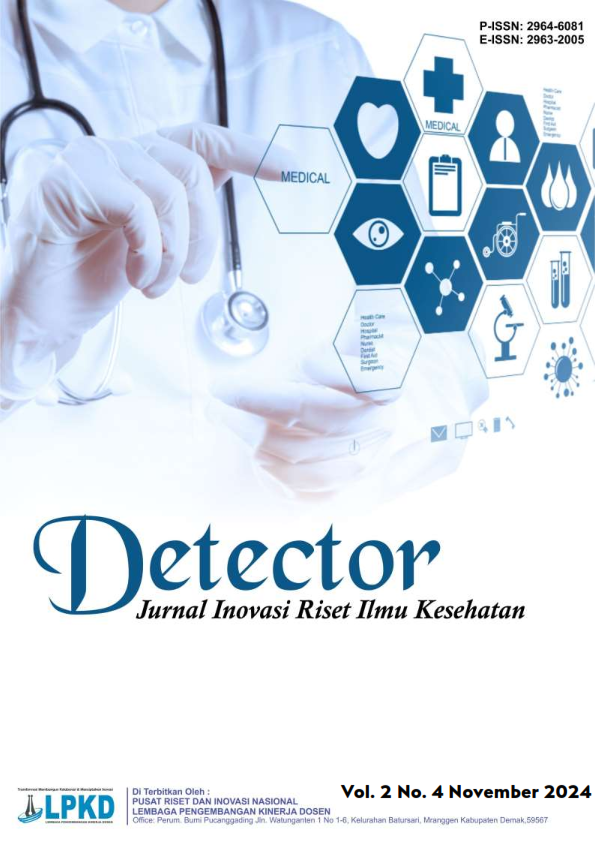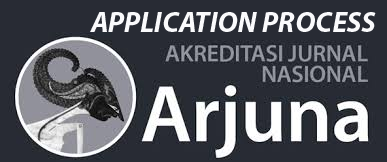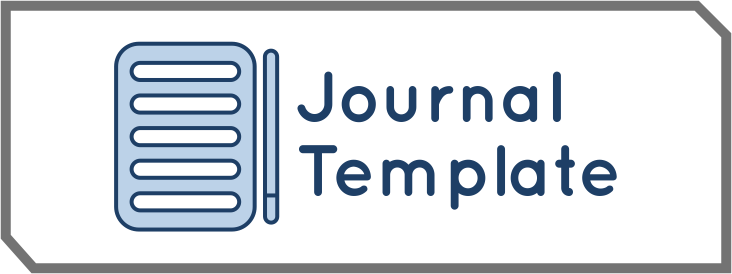Pengaruh Motor Relearning Programme (MRP) Terhadap Peningkatan Kemampuan Fungsional Pasien Hemiparese Post Stroke di Kilinik Nur Medika Luwuk
DOI:
https://doi.org/10.55606/detector.v2i4.4598Keywords:
hemiparese Post Stroke, Motor Relearning Programm(MRP), Nur Medika Luwuk ClinicAbstract
Post-stroke hemiparesis is a weakness or inability to move on one side of the body, making it difficult to do daily activities, such as eating or dressing. Weakness on one side of the arm and leg can cause loss of balance in walking, impaired ability to pick up objects, decreased precision of movement, muscle weakness, and lack of coordination. Motor Relearning Program (MRP) focuses on relearning certain movements, tasks and motor skills that lead to the ability to perform a task. The motor relearning approach emphasizes training in motor tasks. This technique provides functional training and identification of key motor tasks, such as sitting, standing or walking. Objective: This study was conducted to determine the effect of increasing functional ability using the Motor Relearning Program (MRP) on Post-Stroke Hemiparesis patients at the Nur Medika Luwuk Clinic. Method: The research design used was an experimental method with a One-Group Pre-test and Post Test design model. The sample determination used the total sampling technique with a sample size of 10 respondents aged 45-65 years. The Barthel Index was measured to determine the functional ability of the respondents. The results of the study were analyzed using the Shapiro-Wilk normality test and the Wilcoxon sign rank test. Results: The results of the Wilcoxon sign rank test obtained an Asymp.Sig. (2-tailed) value of 0.003 <0.05, which means that there is an effect of the Motor Relearning Program (MRP) on improving the functional abilities of hemiparesis patients at the Nur Medika Luwuk Clinic.
Downloads
References
American Stroke Association. (2019). No Title.
Arquitectura, E. Y., Introducci, T. I., 赫晓霞, Iv, T., Teatinas, L. A. S., Conclusiones, T. V. I. I., Contemporáneo, P. D. E. U. S. O., Evaluaci, T. V, Ai, F., Jakubiec, J. A., Weeks, D. P. C. C. L. E. Y. N. to K. in 20, Mu, A., Inan, T., Sierra Garriga, C., Library, P. Y., Hom, H., Kong, H., Castilla, N., Uzaimi, A., … Waldenström, L. (2015). Acta Universitatis Agriculturae et Silviculturae Mendelianae Brunensis, 53(9), 1689–1699.
Bhalerao, G., Kulkarni, V., Doshi, C., Rairikar, S., Shyam, A., & Sancheti, P. (2013). Comparison of Motor Relearning Program Versus Bobath Approach At Every Two Weeks Interval for Improving Activities of Daily Living and Ambulation in Acute Stroke Rehabilitation. International Journal of Basic and Applied Medical Sciences, 3(3), 70–77.
Hanas, M., Lestari, E., & Asni, E. K. (2019). Gambaran Fungsi Kognitif pada Pasien Pasca Stroke di Poliklinik Saraf RSUD Arifin Achmad Provinsi Riau. Journal of Chemical Information and Modeling, 53(9), 1689–1699.
Hemiparese, P. (2018). GLOBAL HEALTH SCIENCE , Volume 3 No . 1 , Maret 2018 ISSN 2503-5088 GLOBAL HEALTH SCIENCE ----- http://jurnal.csdforum.com/index.php/ghs GLOBAL HEALTH SCIENCE , Volume 3 No . 1 , Maret 2018 ISSN 2503-5088 GLOBAL HEALTH SCIENCE ----- http://jurnal.csdforum. 3(1), 17–22.
N.A, A. (2013). Survei Berbasis 25 Rumah Sakit Sumatera Utara. Prevalensi Stroke.
Pandian, S., Arya, K. N., & Davidson, E. W. R. (2012). Comparison of Brunnstrom movement therapy and motor relearning program in rehabilitation of post-stroke hemiparetic hand: A randomized trial. Journal of Bodywork and Movement Therapies, 16(3), 330–337. https://doi.org/10.1016/j.jbmt.2011.11.002
Su, Y., Yuki, M., & Otsuki, M. (2020). Prevalence of stroke-related sarcopenia: A systematic review and meta-analysis. Journal of Stroke and Cerebrovascular Diseases, 29(9). https://doi.org/10.1016/j.jstrokecerebrovasdis.2020.105092
Ullah, I., Arsh, A., Zahir, A., & Jan, S. (2020). Motor relearning program along with electrical stimulation for improving upper limb function in stroke patients: A quasi experimental study. Pakistan Journal of Medical Sciences, 36(7), 1613–1617. https://doi.org/10.12669/pjms.36.7.2351
Downloads
Published
How to Cite
Issue
Section
License
Copyright (c) 2024 Detector: Jurnal Inovasi Riset Ilmu Kesehatan

This work is licensed under a Creative Commons Attribution-ShareAlike 4.0 International License.








